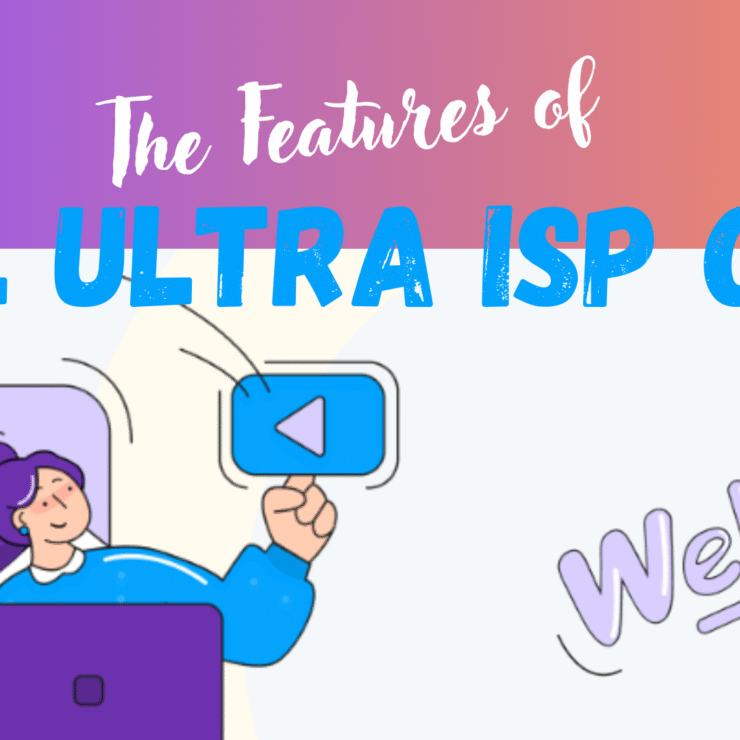In today’s fast-paced digital world, efficiency is key to running a successful Internet Service Provider (ISP) business. One of the most critical aspects of managing an ISP is ensuring that your billing process is smooth, automated, and secure. Integrating API-based payment gateways into your ISP CRM system can streamline payments, reduce manual errors, and provide a seamless experience for your customers.
In this blog post, we’ll walk through the steps to connect payment gateways to your ISP CRM for automated billing and real-time payment processing. We’ll also explore some of the most popular payment gateways available worldwide, including PayPal, Stripe, Razorpay, Easypaisa, bKash, Paystack, and JazzCash, and how they fit into your automated billing ecosystem.
Why Integrate Payment Gateways into Your ISP CRM?
Automating billing processes is a crucial step toward reducing human intervention and ensuring that payments are collected on time. Manual billing can lead to errors, delayed payments, and customer dissatisfaction. API-based payment gateways allow ISPs to automate the billing process, ensuring real-time payments and seamless integration with customer management systems.
Benefits of integrating payment gateways into your ISP CRM:
- Real-time payment processing: Payments are processed immediately, ensuring no delay in service activation or renewal.
- Automated invoicing and payment reminders: Customers receive automated invoices and reminders, reducing administrative work.
- Secure transactions: Most payment gateways come with advanced security features like encryption, tokenization, and two-factor authentication.
- Customer convenience: Offering multiple payment options increases customer satisfaction and loyalty.
- Scalability: As your ISP business grows, automated billing and payment gateways can handle large volumes of transactions without any additional overhead.
Now, let’s break down the steps to integrate payment gateways into your ISP CRM.
Steps to Integrate Payment Gateways into Your ISP CRM
Step 1: Choose the Right Payment Gateway for Your Business
The first step in integrating payment gateways is choosing the right one for your business. Here’s a brief overview of some popular payment gateways:
- PayPal: A globally recognized payment gateway, PayPal supports multiple currencies and is known for its simplicity and security. It’s ideal for international transactions but may have higher fees compared to other gateways.
- Stripe: Stripe is a highly flexible payment gateway that offers developers a wide range of APIs to create custom payment solutions. It supports recurring billing, which is essential for ISP services, and provides robust fraud prevention features.
- Razorpay: Razorpay is a popular choice in India and supports a wide variety of payment methods, including credit/debit cards, UPI, and net banking. It also offers easy integration with CRMs and accounting software.
- Easypaisa: Popular in Pakistan, Easypaisa provides a mobile wallet solution that allows users to pay bills and transfer money. It’s a convenient option for ISPs catering to users who prefer mobile-based payments.
- bKash: As one of the leading mobile payment gateways in Bangladesh, bKash is widely used for online transactions and bill payments. Integrating bKash into your ISP CRM would enable seamless mobile payments for your customers.
- Paystack: Paystack is a popular payment gateway in Africa, particularly Nigeria. It supports multiple payment methods and is known for its ease of use and developer-friendly APIs.
- JazzCash: Another leading payment gateway in Pakistan, JazzCash offers a comprehensive solution for mobile payments, making it ideal for regions where mobile wallet usage is high.
Each of these payment gateways comes with its own API documentation, which allows you to integrate the payment system into your ISP CRM.
Step 2: Create Accounts with Your Chosen Payment Gateway
Once you’ve chosen a payment gateway, you’ll need to create an account and complete any necessary verification processes. This usually involves submitting business information and verifying your bank account.
Each payment gateway has a different process for onboarding businesses, but generally, you will need:
- Business registration details
- Tax identification
- Bank account details for payouts
Step 3: Access API Documentation
After setting up your account, the next step is to access the payment gateway’s API documentation. Most payment gateways provide comprehensive developer resources that include code snippets, authentication methods, and guides for integrating their API into your CRM system.
For example:
- PayPal API Documentation: developer.paypal.com
- Stripe API Documentation: stripe.com/docs/api
- Razorpay API Documentation: razorpay.com/docs
- Easypaisa API Documentation: easypaisa.com.pk
- bKash API Documentation: developer.bkash.com
- Paystack API Documentation: paystack.com/docs
- JazzCash API Documentation: jazzcash.com.pk/developers
Step 4: Integrate the Payment Gateway API into Your ISP CRM
Here’s a high-level overview of the integration process:
- Authenticate API Requests: You’ll need to use the authentication methods provided by the payment gateway. Most payment gateways use API keys, OAuth, or token-based authentication. Make sure to store these credentials securely.
- Create Payment Requests: When a customer makes a payment, the ISP CRM should create a payment request via the payment gateway API. This includes details such as the invoice amount, customer information, and the payment method.
- Handle Payment Responses: After submitting the payment request, the gateway will return a response that indicates whether the payment was successful, pending, or failed. Your ISP CRM should handle these responses and update the customer’s account accordingly.
- Automate Invoicing and Receipts: Once the payment is successful, automate the process of sending invoices and receipts to the customer via email or SMS.
- Implement Webhooks for Real-Time Updates: Many payment gateways support webhooks, which are real-time notifications sent to your server when certain events happen (e.g., payment success, payment failure). Set up webhooks to ensure your CRM is updated in real-time.
- Testing the Integration: Before going live, thoroughly test the payment gateway integration in a sandbox environment. All major payment gateways provide sandbox accounts for developers to test payment flows without processing real money.
Step 5: Automate Billing and Subscription Management
Many ISPs operate on a subscription-based model, where customers pay monthly or annually for internet services. To manage this efficiently, ensure that your payment gateway integration supports recurring billing.
- Recurring Billing: Stripe and Razorpay, for example, offer native support for recurring payments, making it easy to automate the monthly billing cycle.
- Subscription Upgrades/Downgrades: Allow customers to easily upgrade or downgrade their plans, and ensure that the payment gateway adjusts the billing accordingly.
- Payment Reminders: Set up automated payment reminders for customers approaching their subscription renewal date.
Step 6: Ensure Compliance with Local Regulations
Different countries have different regulations for online payments. Make sure that your payment gateway integration complies with local tax laws, data privacy regulations (such as GDPR), and other relevant guidelines. For example, in India, payment gateways like Razorpay and Paytm follow RBI (Reserve Bank of India) regulations, while in the European Union, gateways like Stripe ensure compliance with PSD2 regulations.
Step 7: Go Live and Monitor Transactions
After successfully testing the integration, you’re ready to go live. Monitor your transactions closely during the initial days to ensure that everything works as expected. Set up logs to track payment requests and responses for troubleshooting purposes.
Additionally, use the dashboard provided by the payment gateway to monitor daily transactions, refunds, and chargebacks.
Conclusion
Integrating API-based payment gateways into your ISP CRM for automated billing and real-time payment processing is a game-changer for managing customer payments efficiently. By offering multiple payment options like PayPal, Stripe, Razorpay, Easypaisa, bKash, Paystack, and JazzCash, you provide your customers with a seamless payment experience while ensuring your business runs smoothly.
By following the steps outlined in this blog post, you can streamline your billing processes, reduce manual errors, and create a more secure and scalable ISP business. Happy integrating!





Prerty nice post. I jujst stumbled upon your weblog
annd wished to saay that I have really enjoyed browsing your blog
posts. After all I will be subscribing to your feed and I hope you
write again soon! https://Evolution.org.ua/
Thank you so much! I’m really glad you enjoyed browsing my blog posts. Your support means a lot! 😊 Stay tuned for more updates, and I truly appreciate your subscription. Looking forward to sharing more content with you soon!
Pretty! This has been an extremely wonderful post. Many thqnks for providing this info. https://tablo.com/genres/short-stories-flash-fiction/discussions/11020-1xbet?page=1
Greetings from Onezeroart Family. Thank you for your fantastic comment. Be continue with us.
I am not sure where you are getting your
info, but great topic. I needs to spend some time learning more
or understanding more. Thanks for fantastic information I was looking for this inforrmation for my mission. http://Boyarka-inform.com/
We research the topic thoroughly by exploring various websites and reading multiple articles before publishing on our blog. Thank you for reading and commenting—stay connected with us!
Happy to explore discussions, share thoughts, and learn something new as I go.
I enjoy learning from different perspectives and sharing my input when it’s helpful. Always open to different experiences and meeting like-minded people.
There is my site-https://automisto24.com.ua/
Thanks for being with us. Stay with us to Explore more.